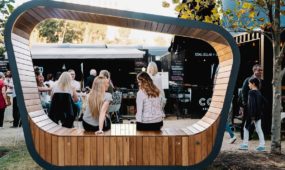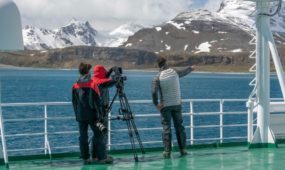Extending shelf life of seafood key to exports
Innovation
Innovations in packaging have allowed a newly formed Australian seafood company to expand their business to national and international markets.

Sign up to receive notifications about new stories in this category.
Thank you for subscribing to story notifications.
A group of independent pipi harvesters joined together in 2012 to form The Goolwa Pipi Company with the help of the South Australian Government as a partner.
The pipi – commonly known as a Goolwa cockle – has gone from being used for fish bait to a seafood delicacy in Australia.
The tiny shellfish graces tables of silver service restaurants in Sydney and Melbourne and has attracted the attention of celebrity chefs such as Simon Bryant and Matt Moran.
A decade ago savvy catchers started to “de-sand’’ the pipis (making the animal spitt out the sand it harboured) to make it an appealing seafood meal.
The second component to successful marketing was finding a way to package the shellfish to be able to reach extended markets – particularly Asia, where cockles are a seafood staple.
Using a $12,000 Innovation Voucher granted by the South Australian government, the pipi industry began investigating Modified Atmosphere Packaging (MAP) with the assistance of the South Australia Research Development Institute, Primary Industries and Regions South Australia and the Fishery Research and Development Association.
Cockles from the Coorong in the amazing Fleurieu Peninsula!
Roger Edwards is the Independent Chair of the Goolwa Pipi Harvesters Association which represents about 60 per cent of the catch quota.
“Using what we learned from the MAP trials we were able to produce a Proof of Concept plan which gave us the confidence to invest in a manufacturing plant,’’ he said.
“The vacuum-seal style of the packaging greatly increases the shelf life of the pipi while also allowing a use by date to be stamped on the bag.”
In the past 10 years the edible pipi industry has grown from $700,000 a year to $4 million a year with the bulk sold to restaurants in Sydney and Melbourne.
Tom Robinson, director of Coorong Cockles, said the pipis are harvested by raking a 60 kilometre stretch of beach on the Young Husband Peninsula, south-east of the Murray Mouth in South Australia.
“About three quarters of the current quota of 450,000 kilograms goes to Sydney and Melbourne,’’ he said.
“We export about five per cent of the catch overseas – primarily to the Asian markets – and that is what we have identified as a major growth area for us.
“With the MAP packaging in place and the extended shelf life, it opens up markets for us that just weren’t possible previously.”
Jump to next article



